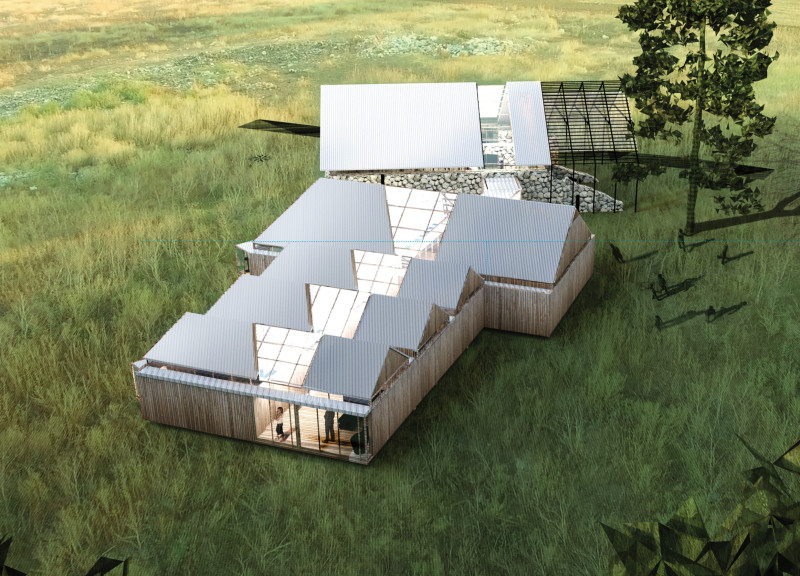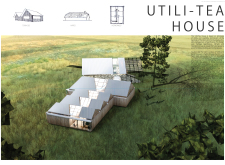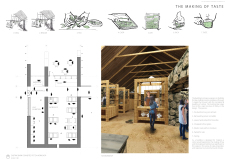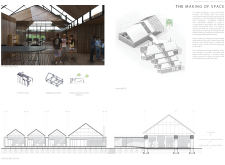5 key facts about this project
The Utili-Tea House combines principles of utility and livability while embracing its historical roots as a barn. Located in a region steeped in cultural heritage, the building accommodates both working and living spaces. It reflects the characteristics of the Baltic climate, offering a design that addresses contemporary needs while honoring the past. The concept centers around creating a multifunctional environment that fosters community interaction and preserves historical significance.
Spatial Organization
The layout of the Utili-Tea House is defined by central communication axes that connect various areas, making movement through the building efficient and intuitive. This arrangement encourages interactions among users, allowing them to move easily between the workshop and living areas. Rooms and key spaces draw from traditional Latvian architecture, demonstrating that practicality can coexist with a sense of balance and harmony.
Heritage Rehabilitation
A core element of the project is the rehabilitation of the existing barn structure. This decision not only maintains the historical essence of the site but also adapts it for modern use. By integrating features of the original barn into the new design, the Utili-Tea House creates a connection between its historical context and the needs of current occupants. The approach highlights a respect for the past while enabling the structure to serve contemporary functions.
Materiality and Environment
Thoughtful material choices are evident in the design through a contrast between the solidity of stone, often found in public buildings, and the warmth of timber that characterizes homes. This mix enhances the aesthetic quality of the interior and exterior spaces. Additionally, the design is responsive to local climate conditions, prioritizing energy efficiency and occupant comfort throughout the changing seasons.
The exterior incorporates large openings that allow ample natural light to flood the interior, creating a welcoming ambiance. This connection to the outdoors enhances the living experience within the house, tying it closely to its surrounding environment.






















































